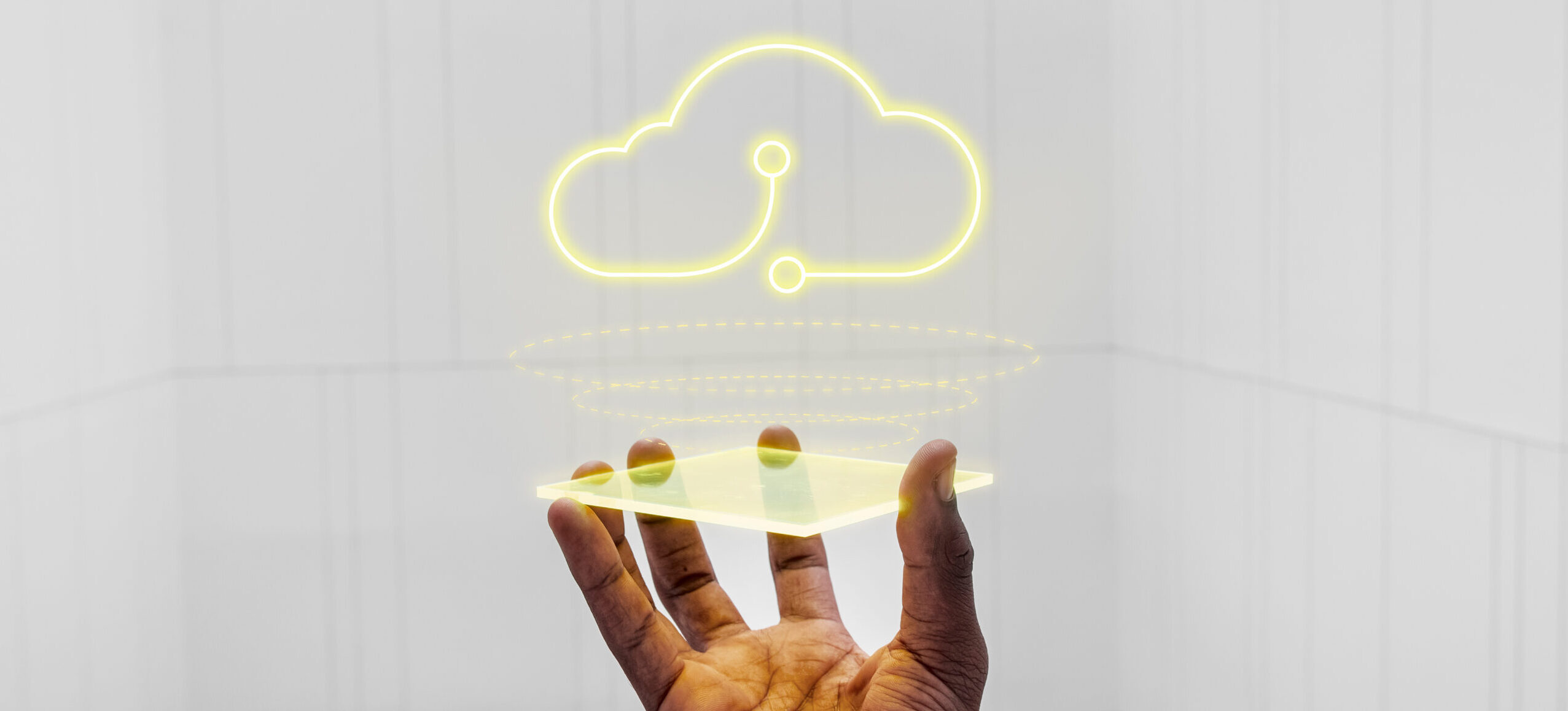Enterprise Digitalization – What is ERP?

When you mentioned digital transformation in enterprise management, the concept of “ERP” would be the first thing comes to mind. Enterprise Resource Planning (ERP) has appeared for over 25 years. Gartner, a world-renowned research institution, invented the term in the early 1990’s to express the transition of MRPII to involve further types of enterprise.
What is ERP?
ERP software was first developed from the manufacturing industry and it has been undergone three development stages:
1.Material Requirement Planning (MRP) – the earliest computerized system designed to enhance the productivity and timeliness for the manufacturing industry.
2.Manufacturing Resource Planning (MRP II) – evolved from the MRP system by integrating the management of all resources in an enterprise, including employee, finance, and assets to enhance efficiency and reduce cost.
3. Enterprise Resource Planning (ERP) – defined as the capability to centralize and standardize broad operational end-to-end processes, such as those found in human resources, finance, supply chain, manufacturing, service, and distribution. ERP software automates and supports a range of administrative and operational business processes across multiple industries.
From the perspective of management, ERP is an effective integration, centralization, and management of enterprise resources, including internal logistics, capital flows, and data, which brings enterprises better economic benefits. ERP strategy in an enterprise is usually a monolithic approach and led by vendors, who are good at replicating the industry best practice from one to many. If enterprises require specific functionality for various business processes, they often ask for customization in the systems to meet the demands. To certain extent, ERP represented advanced enterprise management and digitalization.
What are the challenges of ERP?
With the changing market landscape and customer requirement, the traditional monolithic ERP, however, is not flexible enough in the 21st century. Although ERP represents advanced enterprise management and digitalization, it still subjects to constant criticism due to its high cost, difficult implementation, high operation and maintenance cost, large technical debt, and lack of flexibility.
1.Expensive
There are two aspects composing the cost of ERP. First, the purchase cost of software, hardware, and implementation services is immense. Second, the cost of upgrade and maintenance can also be tremendous. The total cost of ownership (TCO) is comparatively greater than that of general IT systems.
2.Slow
The slowness of ERP can be reflected on two aspects – performance and responsiveness. ERP systems are requested to run complex business processes and handle large transactions from time to time, they easily fall into a performance bottleneck. Besides, ERP systems have been failed to respond in real-time on planning, design, and execution. As mentioned above, the ERP systems are the best practices replicated by vendors from a leading enterprise in an industry to the others. They often fail to offer differentiating and up-to-date functionality for specific industries and changing customer needs. As some enterprises are stuck with the monolithic ERP strategy, which would then easily turn to the results of heavy customization and large technical debt, leading to software bloat. Most of the development inevitably relies on the ERP vendors, which makes the enterprises difficult to respond quickly to the changes in markets.
3.Difficult
There are two areas to embody the difficulty of ERP. First, ERP strategy is difficult to implement. Support from senior leaders is insufficient as there has been a previous bad experience with ERP implementations and the executives are fear that the failure will recur. Business departments mistakenly believe the ERP implementation to be an IT project, leading to inadequate devotion and preparation for the project. Besides, the systems are difficult to operate and maintain. The ERP system is huge, and the configuration is complicated. Without professional training, it is difficult to use and create values as expected.
The future of ERP
The problems mentioned have been the main hurdles on the way of ERP implementation for enterprises for a long period of time since the information age. Now, when we are entering the new digital era, with a growing importance of digital transformation, what would be the future of ERP strategy?

The industry is generally optimistic about the directions: cloud-native ERP, composable ERP strategy and the integration capability with 3rd party resources.
1. Cloud-native ERP
Cloud native, as the name implies, “born in the cloud.” Cloud native refers to the concept of creating and operating applications on distributed computing based on cloud delivery model. The applications are empowered with a set of technologies such as containers, microservices, and DevOps etc. It is not a product, but an approach of building and running applications, with the features of scalability, elasticity, resiliency and flexibility to provide better user experience, stable and reliable service.
Cloud-native ERP is “under the blessing of the new generation of cloud computing and digital technology, providing customers with the ultimate experience of ERP services.” Compared with traditional ERP, cloud-native ERP does not simply move ERP from the local server to the “cloud,” but also “SaaS-ifying” all the applications and functionality of ERP to provide users with cheaper, more agile, more efficient, more stable and smarter enterprise management services.
Enterprises may choose hybrid ERP, a combination of public and private cloud systems. Standard business processes and data will be deployed on public cloud, while the customized business functions are deployed on the private cloud.
2. Composable ERP strategy
Enterprise resource planning (ERP) is no longer only focused on “resources” or “planning.” As a core part of the composable enterprise journey, ERP strategies need to evolve and adopt a growing complex technology environment. Composable ERP suggested by Gartner, a technology strategy (not a product), becomes a new and mandatory direction into a future where application and platform capabilities provide an enterprise business capabilities focus on end users. The composable feature of ERP requires the support of a low-code platform. By providing a drag-and-drop process design tool, the low-code platform greatly reduces the obstacles to software development and changes the way software is built and delivered.
3. The integration capabilities of ERP with other resources
The operation of modern enterprises has surpassed the scope of traditional enterprise and has entered a broader ecosystem. Enterprises not only need to ensure the operation of core business, but also improve the external industrial synergy capabilities. Pooling resources in the value chain, and generating new ones are the mission of the future ERP. Traditional ERP can no longer support this transformation. In the future, ERP will reshape various social business scenarios, including upstream and downstream collaboration in the value chain, bank-enterprise connection, intra-enterprise communication, and 3-party application connection. The future ERP is to help enterprise revitalize the resources of all parties in the industry chain, and improve the efficiency of the entire industry.
The ERP strategy of enterprises is constantly evolving. With the advent of the digital age, ERP systems need to gradually incorporate emerging technologies to cope with changing business and market demands. The suitable ERP strategy will definitely provide enterprises with greater assistance and support on the road to digitalization.
Subscribe to email
updates
Resources
Explore Your New Way of Working
Yonyou Network Technology Released 2022 Annual Report
[dsm_breadcrumbs current_bottom="0px" _builder_version="4.16" _module_preset="default" current_font_size="1px" custom_margin_tablet="" custom_margin_phone="0px||0px||false|false" custom_margin_last_edited="on|phone" custom_padding_tablet=""...
Yonyou’s banking robots, ‘YinZhangTong’, enhance finance management from value guarding to value creation
[dsm_breadcrumbs current_bottom="0px" _builder_version="4.9.2" _module_preset="default" current_font_size="1px" custom_margin_tablet="" custom_margin_phone="0px||0px||false|false" custom_margin_last_edited="on|phone" custom_padding_tablet=""...

